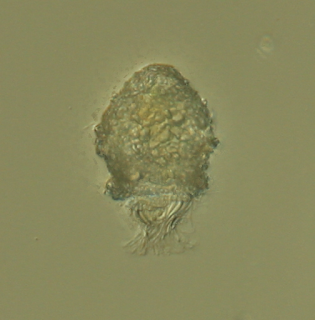In this video I use optical sectioning to view different aspects of a testate amoeba. Starting at .06 in the video the advancing pseudopod becomes clearly evident. At .28 you can clearly see the body inside the shell along with various attachment points. From .43 to .48 you can see the texture of the shell (test) at various levels. The rest of the video follows the sections down again to the view of the pseudopod.








